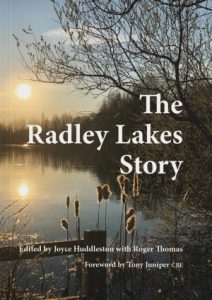Mike Evans came to talk to us about the history of Fitzharry’s Estate, just to the north of the centre of Abingdon. The estate has a rich history, transforming from a medieval Norman property to a modern residential area. Its continuous occupation highlights the enduring value of this location as it adapted through centuries to changes in society. Originating in the early 12th century as an Abingdon Abbey holding granted to the Norman knight Owen, the Manor included a small motte with a moat, built between 1071 and 1084 for defence. By 1247, Hugh Fitz-Harry, a descendant of Owen, was disputing control with the Abbey. The manor later became known by variants of his name, including Fitzharrys and Fitzharris.
After the dissolution of Abingdon Abbey in 1538, the freehold of the manor and its house passed to the new Borough of Abingdon. The Borough continued the policy of leasing out the estate and the house was rebuilt over the centuries. In 1862, the Borough sold the freehold and the manor’s farmland was gradually sold off by successive purchasers for housing as the town of Abingdon grew. Major-General Sir Charles Corkran was the last resident freeholder; he died in 1939 in a tragic shooting accident on the estate.
A pivotal shift occurred in 1946 when the Ministry of Supply acquired the estate to build houses for senior or key staff arriving in the area to work at the new Atomic Energy Research Establishment (AERE) south of Abingdon at the former RAF Harwell. Rapid construction of 140 houses underscored the urgent national priority for atomic research and attracting talent. Residents included Bruno Pontecorvo, who defected to Moscow, linking the development to Cold War espionage. The manor house, neglected and vandalised, was demolished by 1953. Houses were initially rented, then sold by the UK Atomic Energy Authority from the early 1960s. The memories of its early residents give a picture of a happy and carefree childhood they had enjoyed on the Fitzharry’s Estate. It remains a thriving community at the heart of Abingdon.
Learn more about the Fitzharry’s Manor Estate and its history from:
- Fitzharry’s Manor Estate Residents Association
- Entry for Fitzharris Estate on the Abingdon Town Council website
